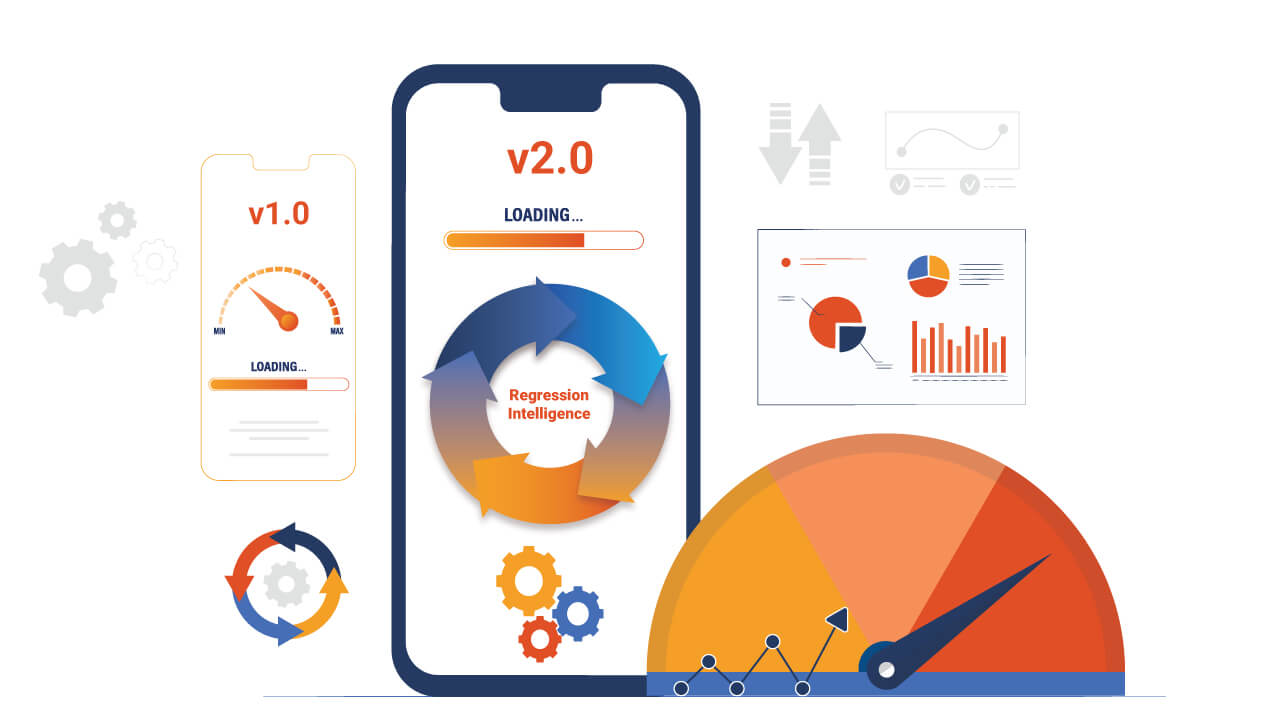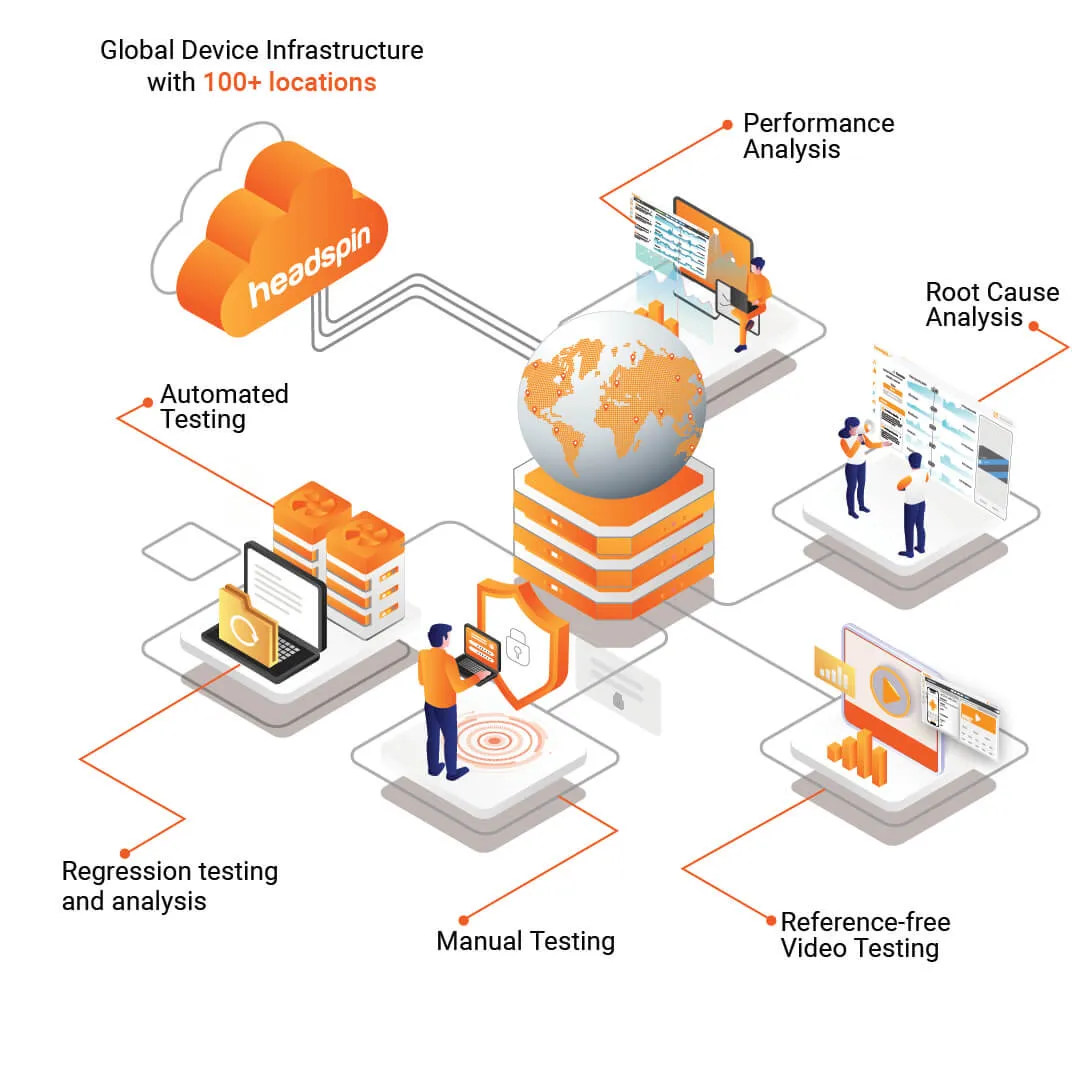Telecom networks are complex, and when something breaks, finding the cause takes too long. Traditional root cause analysis (RCA) relies on manual log analysis and troubleshooting, which slows down resolution.
Engineers spend hours sifting through data, trying to pinpoint issues while users experience service disruptions.
AI-powered RCA systems changed this.
Instead of waiting for engineers to diagnose problems manually, AI can quickly analyze vast amounts of data, detect patterns, and identify the root cause. This means faster issue resolution, fewer outages, and better network performance.
In this blog post, let us look at why AI is essential for root cause analysis in the telecom sector, and how HeadSpin’s AI-powered approach works.
Also, let us learn how Generative AI can pave the way for even smarter automation of RCA.
The Need for AI in Telecom RCA
Telecom networks have vast amounts of data flowing across multiple systems.
When service disruptions occur, operators must identify the root cause quickly to minimize downtime. However traditional RCA methods struggle to keep up as they are slow, labor-intensive, and prone to human errors.
As networks expand and become more sophisticated, these methods are no longer enough.
Unlike manual approaches, AI-powered systems can process vast amounts of real-time and historical data, detect hidden patterns, and correlate multiple network behaviors instantly. It enables operators to shift from reactive troubleshooting to proactive issue prevention, reducing downtime and improving service reliability.
Another key advantage of AI-powered RCA is anomaly detection. With the help of machine learning algorithms, AI can spot irregularities in network performance. It identifies patterns and behaviors within the data that are normal and can flag any deviations from those patterns.
This proactive approach helps telecom providers address potential issues before they affect users.
Over time, AI systems learn from past incidents, improving their accuracy and efficiency, and making network operations more resilient.
Read: Why Should Telcos Focus on Roaming Testing?
Solving Key Telecom Challenges with AI-Powered RCA
Telecom networks face a range of challenges, from poor voice quality to connectivity drops. AI-powered RCA can significantly accelerate troubleshooting in critical scenarios like:
1. 5G Deployment & Testing
With the rollout of 5G, telecom operators need to maintain strong connectivity, low latency, and efficient handovers between network towers. AI can analyze 5G network performance, identifying potential issues in data throughput, network handoff failures, and latency spikes before they impact users.
2. VoIP and Video Call Quality Optimization
Dropped calls, poor audio quality, and video buffering frustrate customers. AI-powered RCA can automatically detect anomalies in voice-over-IP (VoIP) and video call sessions, analyzing jitter, and signal strength to pinpoint the root cause and recommend fixes.
3. Roaming Network Experience Monitoring
Ensuring consistent service quality for roaming users is challenging due to varying network conditions across regions. AI-powered RCA can analyze realistic roaming data, identify network switch failures, and detect areas where service degrades, enabling proactive optimization.
4. Last-Mile Quality of Experience (QoE) Validation
For telecom providers, ensuring a smooth last-mile connection is critical for customer satisfaction. AI can assess network performance at the user endpoint, diagnosing bandwidth constraints, signal interference, and congestion issues that degrade service quality.
5. Continuous Network Benchmarking
Comparing network performance against competitors helps telecom providers stay ahead. AI automates benchmarking by analyzing KPIs such as network throughput, call success rates, and latency variations across different regions, allowing for data-backed improvements.
How HeadSpin Uses AI for RCA
HeadSpin uses AI-powered Root Cause Analysis (RCA) to find and fix performance issues in digital experiences. It collects data across different parts of the technology stack to help developers understand what’s slowing things down or causing user problems.
1. Collecting Data for Continous Benchmarking
HeadSpin records network traffic, device logs, and screen activity. This information is placed on a shared timeline using the Waterfall UI, making it easier to compare different performance metrics. It helps telecom teams:
- Identify locations with poor signal quality or high call failure rates.
- Compare how different network conditions affect app load times and responsiveness.
- Track latency spikes, buffering issues, and inconsistent speeds.
2. Roaming Performance Tests & Network Switching
When users travel internationally, network switching delays can cause dropped connections and slow authentication. HeadSpin helps telecom teams:
- Detect issues when switching between local and partner networks.
- Ensure seamless call and data performance for roaming customers.
- Identify slow network handshakes causing authentication delays.
3. 5G Deployment & Handoff Failures
5G networks require seamless transitions between towers, but handoff failures can disrupt service. HeadSpin with its network testing and diagnostics capabilities:
- Detects handover failures when devices lose connection between 5G towers.
- Identifies packet loss and latency spikes during network handoffs.
- Spots congestion areas where high traffic slows 5G speeds.
4. In-Drive Network Testing for Coverage Optimization
Users expect uninterrupted service while traveling, but network coverage varies across different regions. HeadSpin’s in-drive testing provides insights based on:
- Testing real devices in moving vehicles with P-Boxes deployed in the client network.
- Monitoring 5G Ultra-Wideband performance on highways, urban areas, and transit routes.
- Detecting weak spots affecting navigation, streaming, and calls to optimize coverage.
What’s Next? Introducing Generative AI for RCA Automation
Telecom testing teams need faster debugging without losing accuracy. While tools like Microsoft’s Copilot aren’t built for Root Cause Analysis (RCA), they can support it by analyzing logs, spotting patterns, and suggesting fixes. Integrating AI with SonarQube enables context-aware code suggestions, while in Postman, Gen AI can review API failures and recommend specific code changes. These integrations reduce manual effort and speed up troubleshooting. In Part II of this blog post., we’ll explore deeper use cases and implementation strategies.
Wrapping Up
Given AI's capabilities, it's clear that Root Cause Analysis (RCA) in telecom could see significant improvements with this technology. AI excels at processing vast amounts of data quickly and detecting issues that might otherwise go unnoticed. With continued advancements, AI will only become more adept at diagnosing issues, predicting failures, and ultimately transforming how telecom networks are maintained.














































-1280X720-Final-2.jpg)






